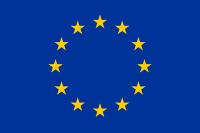Hypotheses and Insights
Propose a hypothesis and share your findings
Peer collaboration or hierarchy? The epistemic reliability of Wikipedia needs both
- Context
- Over the years, research has shown that Wikipedia is shaped by the interaction of two opposite dynamic
forces. The reliability of its content seems to be a feature of what has now become established as a
“wisdom of the crowd” effect. The sheer multitude of people who provide input on a given topic harnesses
the emergence of a characteristic form of collective intelligence that makes Wikipedia's content solid and
trustworthy. On the other hand, scholars who have focused on the inner workings of Wikipedia’s social
dynamics have highlighted how its organization reflects the so-called “iron law of oligarchy”, that is, a
phenomenon whereby the first generation of Wikipedians, once established, has set a very high bar for
new members to enter the core circle of content creators and editors. When compared to different
websites and social media, Wikipedia is in fact the digital platform with the widest gap between those who
produce content and those who read and use it for specific purposes. - Hypothesis
- Wikipedia has often been taken as a virtuous example of a digital platform that unleashes the power of the “wisdom of the crowd” as enabled by Web 2.0 affordances. While the unprecedented large-scale participation in the foundation and evolution of Wikipedia is a matter of fact, research has shown that, despite the massive collective effort, Wikipedia is also characterized by a highly selective curatorial leadership, consisting of editors (i.e., the “Wikipedians”), which play a key role in its maintenance and show very high levels of commitment in terms of time and effort. Our hypothesis is that the epistemic reliability of Wikipedia needs both peer-collaboration and hyerarchy.
- Collaboration
- Related dataset URL
- Related insights URL
- Indicators
- Temporal network analysis toolset
- Evaluation
AUTOMATED DATA CONTENT ANALYSIS
Report inappropriate content
Is this content inappropriate?






0 comments
Conversation with kate
Add your comment
Sign in with your account or sign up to add your comment.
Loading comments ...